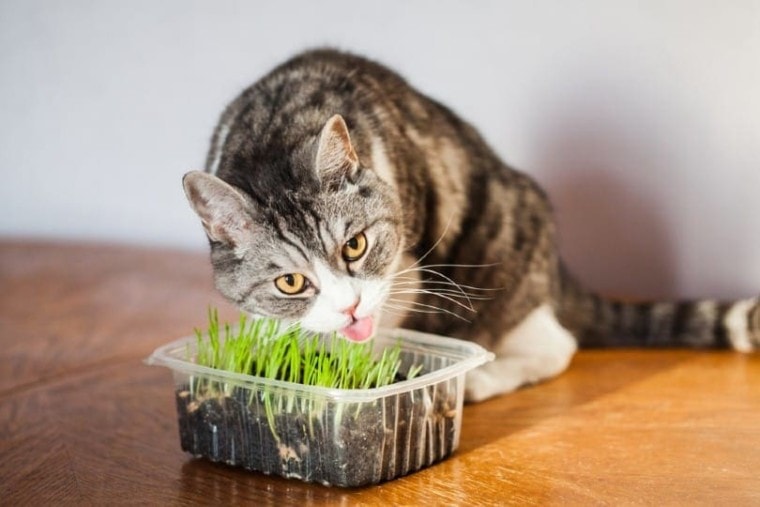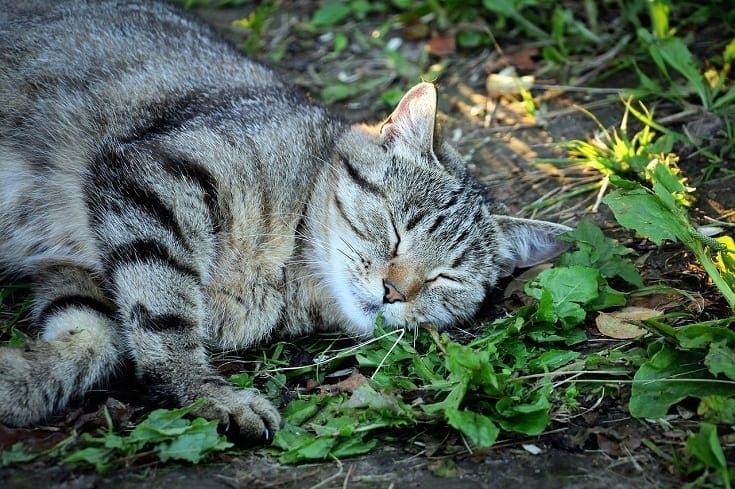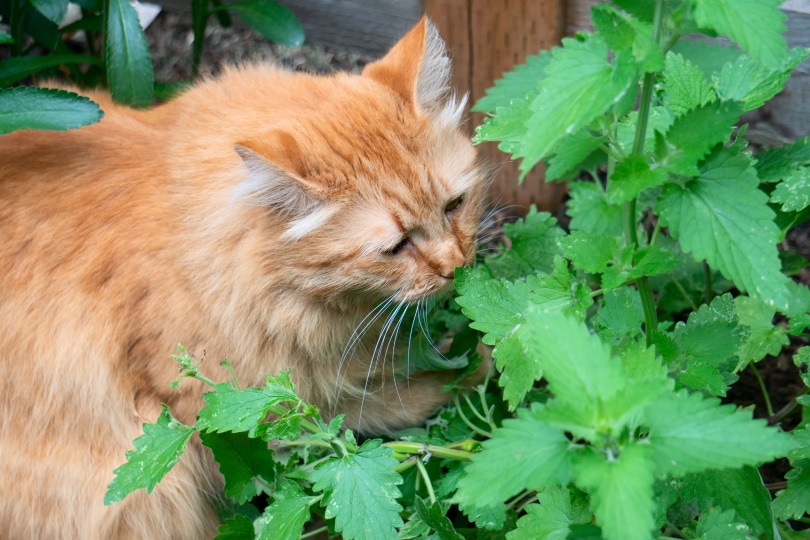
Click to Skip Ahead
If you have a cat, you probably are well-acquainted with catnip and its effects on your pet. While it may not affect kittens under 3 months old, it will likely create what some researchers have described as a hallucinating response to this plant. You may also have heard it called catmint. But are the two the same species? It depends on who you’re asking.
Catnip

The invasive plant that grows in areas with well-drained soils and full sun is catnip (Nepeta cataria). It’s the species that the pet industry uses to make toys and other products with its distinctive, pungent scent. Manufacturers also use it for essential oils, teas, dietary supplements, and other uses.
Catnip grows in the wild in places where it is wanted and others where it is a weed or misplaced plant. Its origin is across the pond in Asia and Europe. Historians believe that early settlers introduced it to North America, where it thrived and spread. Some states have even restricted or banned it, including West Virginia, Alaska, and Kentucky, where the state considers it a moderate threat.
You’ll find catnip growing in 49 out of the 50 states and Canada. Hawaii is the only place where this plant hasn’t taken hold.
Interestingly, catnip has a long history of folklore use. The Indigenous nations of the Cherokee, Chippewa, and others, used it for a variety of purposes, from cough medicines to pain relievers to sedatives. Recent evidence suggests that it is more effective than DEET at repelling mosquitoes. It’s also deer-resistant. One sniff will tell you why that’s true.
Catmint
Here’s where things get a bit tricky. Catmint is both a wild plant and a cultivated variety for gardens and landscaping. The latter explains why it’s hard to pinpoint what it is exactly. That’s because many species of this genus also share the property of alluring cats, hence the name. The same thing applies to the word catnip. It’s almost like a generic term rather than a particular name.
Similarities Between Catnip and Catmint
The similarities between catnip and catmint start with its taxonomy. They are part of the Lamiaceae or Mint family. That may explain the use of this word with the latter. It also refers to the fact that many of these species are aromatic. It’s part of their attraction to bees, hummingbirds, and felines. However, its attraction extends beyond these animals to include humans.
Both are part of the same genus, Nepeta. The word is a reference to the Etruscan civilization. It’s fitting, considering the plant’s ancient origins. You’ll find the words catnip and catmint are interchangeable. It comes into play with many of the hundreds of species within this genus, where you’ll see many with either part of their common name.

Differences Between Catnip & Catmint
The origins are at the forefront of the differences between catnip and catmint. Catnip, as we know it here in the United States, exists in the wild for centuries. In the cultivated sense, catmint is a more recent addition to the botanical side. Many of the species of the genus exist overseas. That’s part of what makes this discussion pertinent. It also adds to the confusion and this question.
If we compare the wild catnip with the cultivated catmint, we can see one glaring difference between the two plants. The former is less desirable. It’s invasive and scorned in some places. Not much can keep it from spreading since it has few pests or other barriers to catnip growing wherever it can. The problem is that it can crowd out other vital plant species that benefit wildlife.
On the other hand, catmint isn’t invasive as many cultivated plants are sterile, often resulting from hybrids. Landscaping species don’t spread. They form compact tussocks and bring all the desirable features to the table, such as their benefits to pollinators and wildlife. The name catmint is also more common in the United Kingdom.

Final Thoughts
Catmint and catnip share many common things. They are synonyms of the same plant. Both terms are part of the names of many species of this genus. Either one isn’t definitive of anything particular. Instead, they are descriptive terms that refer more to their affinity with cats than anything else. However, the differences are worth noting from an environmental point of view.
Catnip presents more of an ecological issue than catmint since it’s invasive and threatens native plant species. That makes its presence and effects more far-reaching. Catmint is a result of horticulturists’ attempts to negate the negative aspects of the wild plant to optimize the best things about this species. In the right place, either one is an excellent addition to your landscaping.
- Related Read: Why Do Cats Love to Roll Around in Catnip?
Featured Image Credit: Olga Malinina, Shutterstock







